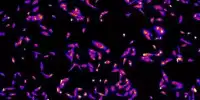Oral immunotherapy (OIT) is the practice of feeding an allergic person increasing amounts of an allergen in order to raise the threshold that causes a reaction. A person allergic to peanuts, for example, could be given very small amounts of peanut protein that would not cause a reaction. Over the course of several months, this small amount is gradually increased in the allergist’s office or a clinical research setting. The goal of therapy is to raise the threshold that can cause a reaction and protect the allergic person from accidental ingestion of the allergen. OIT is not a curative treatment. Individuals who receive OIT will continue to carry epinephrine, read labels closely, etc., and it is not expected that OIT will lead to ingestion of the allergen without limitation.
Prior to the survey, 72 percent of adult patients and caregivers of children with food allergies did not know what oral immunotherapy (OIT) was, according to a study of a geographically, clinically, and socioeconomically diverse, nationally-representative sample of US households. Researchers also discovered that current OIT awareness is disproportionately high among wealthier, more educated respondents, emphasizing the need for more equitable outreach efforts and greater access to these therapies for all patients with food allergies. The research was published in the Journal of Allergy and Clinical Immunology: In Practice.
According to the most recent epidemiological data, approximately half of all food-allergic children in the United States are Black, Hispanic/Latinx, or multi-racial, populations that have historically faced greater barriers to specialty care due to lower socioeconomic status. It is critical that we reach out to these children and raise awareness about oral immunotherapy so that they, too, can benefit from recent advancements in food allergy treatment.
Ruchi Gupta
Food allergies are a major public health concern, affecting approximately 8% of children and 10% of adults in the United States. Currently, the best way to manage food allergies is to avoid the offending food as much as possible while also having epinephrine on hand. This presents a significant challenge for patients and families because it can reduce quality of life, impose financial burdens, and potentially result in life-threatening anaphylaxis after accidental ingestion. Palforzia®, a drug derived from peanut flour, was approved by the FDA for use in OIT in 2020, making it the first approved treatment for patients aged 4 to 17 years.
“With the ongoing expansion of oral immunotherapy offerings and additional therapies on the horizon,” said senior author Ruchi Gupta, MD, MPH, a pediatrician and food allergy researcher at Ann & Robert H. Lurie Children’s Hospital of Chicago and Professor of Pediatrics at Northwestern University Feinberg School of Medicine.

“According to the most recent epidemiological data, approximately half of all food-allergic children in the United States are Black, Hispanic/Latinx, or multi-racial, populations that have historically faced greater barriers to specialty care due to lower socioeconomic status. It is critical that we reach out to these children and raise awareness about oral immunotherapy so that they, too, can benefit from recent advancements in food allergy treatment.”
781 people from all 50 states completed the surveys. To be eligible for the study, respondents had to report a physician-diagnosed food allergy.
“Our Community Access Initiative strives to understand barriers such as the one identified in this study and develop programs and resources to address the need,” said Anita Roach, MS, FARE, VP of Community Programs & Education. “Income and education level should not be a barrier to receiving food allergy care or support.”
The current standard of care for food allergy treatment is to avoid the allergen and treat anaphylaxis with auto-injectable epinephrine. While many food allergy treatments, such as OIT and epicutaneous immunotherapy (EPIT, or a skin patch), have been deemed investigational by professional allergy societies and other key stakeholders, the Food and Drug Administration’s (FDA) Allergenic Products Advisory Committee recently voted to support the approval of a standardized oral immunotherapy (OIT) product for peanut allergy.
The brand name, which was previously known as AR101, is expected to be PalforziaTM. The proposed indication is for treatment to reduce the incidence and severity of allergic reactions, including anaphylaxis, following accidental peanut exposure in patients aged 4 to 17 years with a confirmed peanut allergy. For review and approval, the FDA now requires the submission of a Risk Evaluation and Mitigation Strategy.
In clinical trials, efficacy has traditionally been defined by the induction of a desensitized state. “Desensitization” refers to the improvement in food challenge outcomes following therapy and is dependent on ongoing allergen exposure. Peanut, egg, and milk OIT have been shown to desensitize 60 to 80% of patients studied. Desensitization rates for other foods have not been studied as thoroughly, and some evidence suggests that OIT may not be equally effective for all food allergies. Because efficacy has been measured in trials using oral food challenges, it is not yet clear whether desensitization can protect patients from real-world accidental exposures (e.g. prevent hospitalization or death).
















